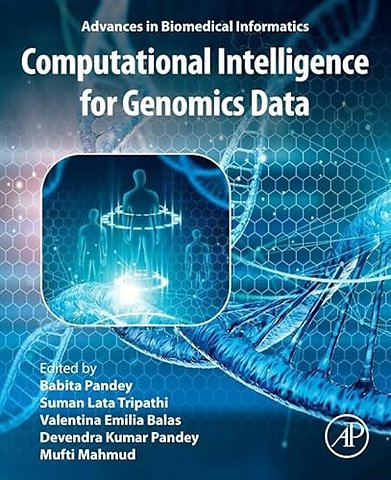Section 1: Introduction to biological data and analysis<br>1.1 Genomic data<br>1.2 Microarray analysis<br>1.3 Hub gene selection<br>1.4 Pathogenesis<br>1.5 Expressive gene<br>1.6 Gene reduction<br>1.7 Biomarkers<br><br>Section 2: Traditional Machine learning models for gene selection and classification<br>2.1 Gene selection and liver disease classification using machine learning<br>2.2 Gene selection and Diabetic kidney disease classification using machine learning<br>2.3. Gene selection and neurodegenerative disease classification using machine learning<br>2.4. Gene selection and neuromuscular disorder classification using machine learning<br>2.5. Gene selection and cancer classification using machine learning<br>2.6. Gene selection and disease classification using machine learning<br><br>Section3: Deep learning models for gene selection and classification<br>3.1 Gene selection and liver disease classification using deep learning<br>3.2 Gene selection and Diabetic kidney disease classification using machine learning<br>3.3. Gene selection and neurodegenerative disease classification using deep learning<br>3.4. Gene selection and neuromuscular disorder classification using deep learning<br>3.5. Gene selection and cancer classification using deep learning<br>3.6. Gene selection and disease classification using deep learning<br><br>Section 4: Gene selection and classification using Artificial intelligence-based optimization methods<br>4.1 Gene selection and liver disease classification using Particle warm optimization, genetic algorithm, principal component analysis, wolf optimization, ant colony optimization etc.<br>4.2 Gene selection and Diabetic kidney disease classification using Particle warm optimization, genetic algorithm, principal component analysis, wolf optimization, ant colony optimization etc.<br>4.3. Gene selection and neurodegenerative disease classification using Particle warm optimization, genetic algorithm, principal component analysis, wolf optimization, ant colony optimization etc.<br>4.4. Gene selection and neuromuscular disorder classification using Particle warm optimization, genetic algorithm, principal component analysis, wolf optimization, ant colony optimization etc.<br>4.5 Gene selection and cancer classification using Particle warm optimization, genetic algorithm, principal component analysis, wolf optimization, ant colony optimization etc.<br><br>Section 5: Explainable AI for computational biology<br>5.1. Use of LIME for diagnosis of disease<br>5.2. Use of Shape for diagnosis of disease<br>5.3. Quantitative graph theory for integrated omics data<br><br>Section 6: Applications of computational biology in healthcare<br>6.1 Diagnosis of liver disorder<br>6.2 Diagnosis of diabetic kidney disease<br>6.3 Diagnosis of cancer<br>6.4 Diagnosis of neurodegenerative disorder.<br>6.5 Diagnosis of neuromuscular disorder<br>6.6. Diagnosis of any other health disorder
